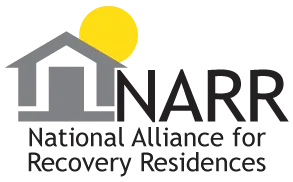It’s a normal day in your studio, you are working on a commissioned painting for a prestigious CEO as a surprise gift for his wife. The project has been going well and he gave you free rein to put your own spin on the inspiration photo. You finally finish the piece, and as you always do after completing a project, you celebrate with a few bumps of cocaine.
After you take the cocaine, you begin freehand sketching in your book. You always reward yourself after a big project with some time for just you, letting the cocaine work your fingers without having to think too deeply. The pencil flies as your fingertips smudge and shade. Something feels strange though, and out of nowhere, everything goes black. You awake to see your assistant standing over you, your painting ripped on the floor. She tells you she thinks you had a seizure and that your legs kicked the easel, knocking the painting down and ruining it. Your head is still swimming as you try to make sense of it all, as ambulance sirens approach in the distance.
In 2022, 134 non-fatal stimulant-involved overdose emergency department visits occurred in Pinellas County. Tranquil Shores works to bring education on the not-as-well-known side effects of substance use – like how cocaine can cause seizures. Our program consists of many different therapy options including alternative healing, experiential therapy, and holistic-based recovery. Cocaine works by changing the way the brain functions. Let’s look at cocaine and seizures further.
Cocaine’s Effects on the Brain
Cocaine is a stimulant that comes from the coca plant. It can be smoked, snorted, injected, and swallowed. When cocaine enters the bloodstream, it has immediate effects on the brain. The mesolimbic dopamine system is the reward pathway within the brain, and normal pleasurable activities such as eating a good meal or having sex will trigger this pathway to release dopamine. Cocaine works in the same way by releasing dopamine in the brain. However, cocaine blocks the dopamine transporter. The dopamine released is no longer able to be transported out of the brain, causing the euphoric feeling associated with cocaine. Because this system is based on communication, chronic cocaine use can even cause disruption in communication for months or years after use has stopped.

Cocaine Use and Seizures: Is There a Link?
While the link between cocaine use and seizures has been unclear, there is evidence of some overlap between the two. Cocaine use has been shown to lower the seizure threshold, which is the level of stimulation the brain can withstand before a seizure is triggered. By lowering this threshold, seizures can occur in those who do not have a seizure disorder and can exacerbate seizure occurrence in those who do have a disorder.
What Are Seizures?
A seizure is described as a spurt of electrical activity between brain cells. This causes uncontrollable muscle movements, abnormal behaviors and sensations, and altered states of awareness. There are different types of seizures and no two are considered the same. Seizures can be the result of an acute source or be recurring, which indicates epilepsy. There are many types of seizures, including:
Focal (partial) seizure – a seizure that begins in one section of the brain and spreads. A focal seizure can be complex partial, where the person does not know something is going on, or simple partial, where the person is aware that their body is moving or behaving differently. These seizures usually stem from a stroke or trauma.
Absence seizures – occur in children and juveniles. In children between 4 and 6, absence seizures are classified as brief episodes of staring. They are usually outgrown. Juvenile absence seizures can indicate epilepsy and begin after age 6. Both tonic-clonic seizures and absence seizures occur and continue into adulthood.
Myoclonic seizures – sudden, and occur on both sides of the body. Myoclonic seizures cause limb and body spasms that can occur in the head, neck, and arms. They can be a part of juvenile epilepsy or other epilepsy-related conditions.
Atonic seizures – described as “drop attacks”. Typically affecting those with severe intellectual disabilities or multiple brain injuries, atonic seizures result in sudden collapsing. Injuries are common with this type of seizure.
Tonic-clonic seizure – an evolved seizure. Tonic-clonic seizures can stem from a focal seizure where both sides of the brain become affected or from continuous myoclonic seizures. They can occur generally or from an epileptic disorder.
Cocaine and Seizure Disorders
Using cocaine while having a seizure disorder can trigger an increase in seizure activity. The brain is a complex organ, and has an extensive network of electrical activity to regulate the many different systems within the body. Seizures disrupt the electrical flow, resulting in damage, strokes, and injuries. Cocaine use combined with a seizure disorder can cause life-threatening conditions and permanent brain damage.
Those with seizure disorders who use cocaine also tend to not take care of themselves as well. Cocaine causes a loss of appetite, leading to malnourishment. Loss of sleep is also a common side effect of cocaine use, disrupting the brain’s patterns. Many also do not adhere to taking their antiepileptic medications properly, resulting in a higher occurrence of seizures.
Cocaine-Induced Seizure Symptoms
Cocaine-induced seizures tend to only occur in isolated incidents but can happen more than once as cocaine use continues. The cause of cocaine-induced seizures has to do with an imbalance between the inhibitory and excitatory circuits within the brain. Lack of sleep can contribute to this imbalance, which cocaine is known to cause. Symptoms of a cocaine-induced seizure include:
- Involuntary muscle movements in the arms, legs, and neck
- Loss of coordination
- Loss of bladder control
- Limited breathing
- Loss of consciousness
The type of seizure noted with cocaine use is tonic-clonic typically, but in those with a seizure disorder, other types have occurred. A study showed that out of 43 cases, 42 experienced a tonic-clonic seizure caused by cocaine use. However, the last case developed status epilepticus, a condition where a seizure occurs for more than 30 minutes or two or more seizures occur without a full recovery of consciousness. This condition is a medical emergency and has high mortality rates.
Seizures, Cocaine Withdrawal, & Cocaine Overdose
Seizures are not commonly associated with cocaine withdrawal, but they can happen if the person is already prone to experiencing seizures. Cocaine withdrawal is an uncomfortable process, and cravings can become very intense during this time. If a return to use happens after the person has detoxed, a seizure may occur after they use cocaine again.
Seizures are more common with a cocaine overdose. When too much cocaine enters the system, the brain and body become overwhelmed. The heart races, which can result in blood clots forming. These clots can travel to the brain, triggering a stroke. As bleeding within the brain increases, seizures also occur. Strokes and seizures combined from a cocaine overdose can lead to permanent brain damage or even be fatal. There is no medication to reduce how much cocaine is in the body, medical professionals can only treat the symptoms as they happen.

Seeking Cocaine Addiction Treatment in Pinellas County, FL
Experiencing a seizure from cocaine use is scary, especially if you are in an unfamiliar place. However, it can be your wake-up call to seek help for cocaine use disorder. Finding a cocaine addiction rehab will begin the process of discovering recovery. Therapy will help you find the root causes of your addiction, while health and wellness classes can teach you how to build a healthy lifestyle. Cocaine can seem to strip the joy from your life. When you join the thriving community of those in recovery, the beauty and happiness of your life will return. There is no better time to begin than now.
Managing a cocaine use disorder does not exclude you from experiencing a seizure – it can still happen at any given moment. Tranquil Shores is here to offer a helping hand before that happens. We understand it can seem impossible to seek treatment with all of your work obligations. In our program, you are allowed to keep your electronic devices to allow you to continue working throughout your treatment. Call us today at 727-391-7001 for the peaceful and private treatment you deserve.







